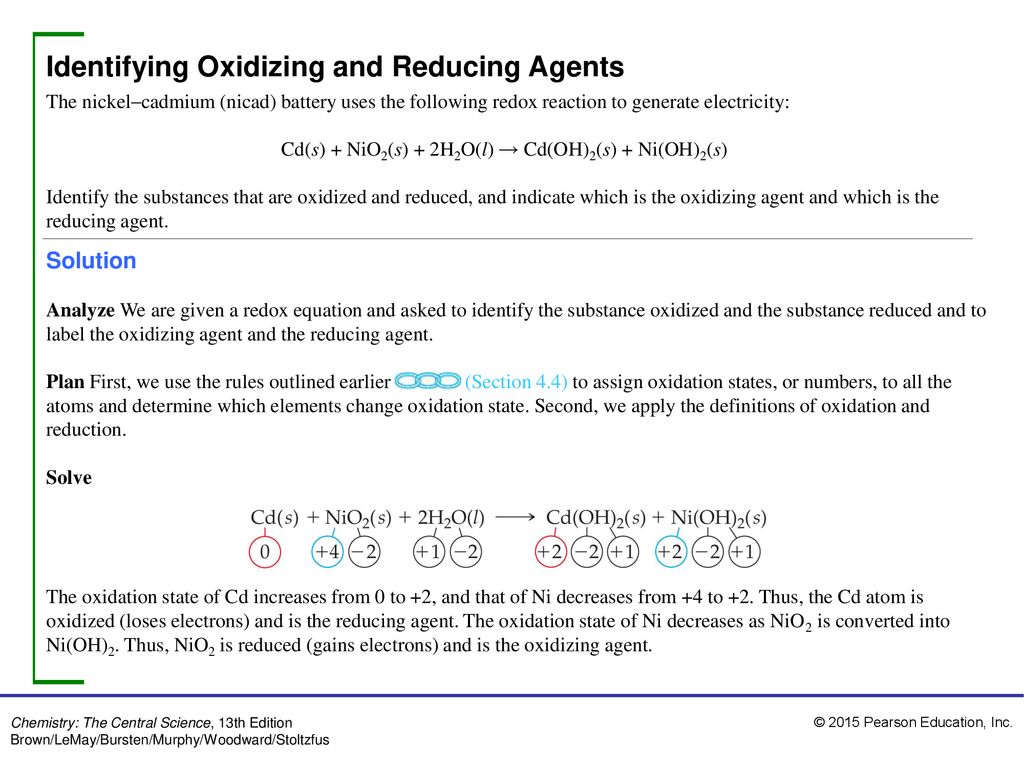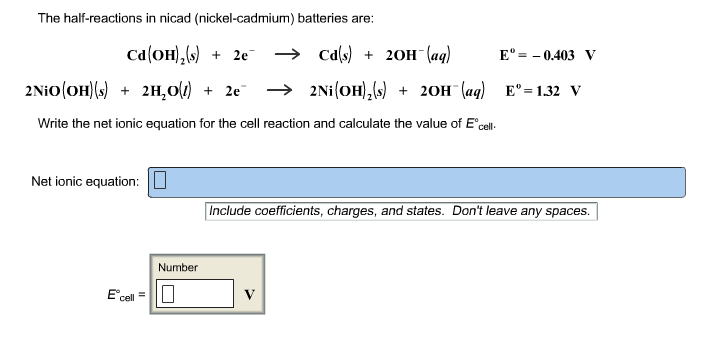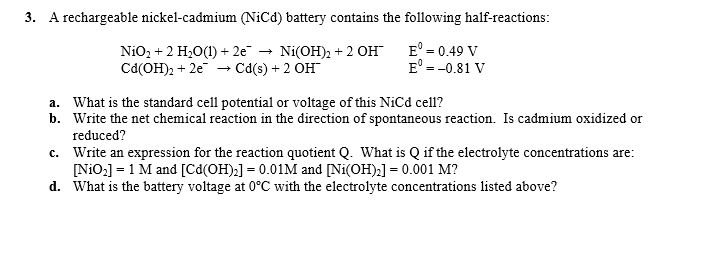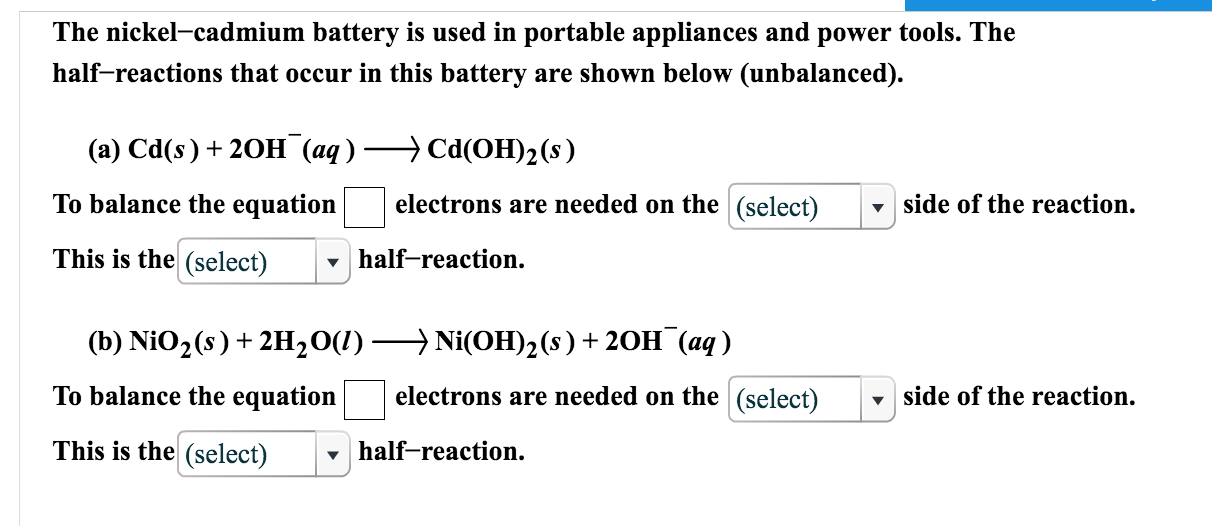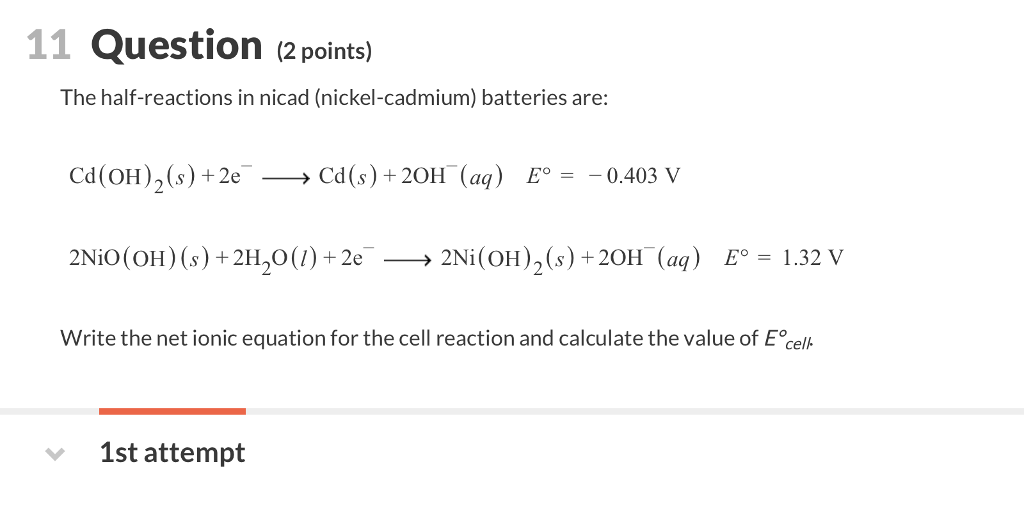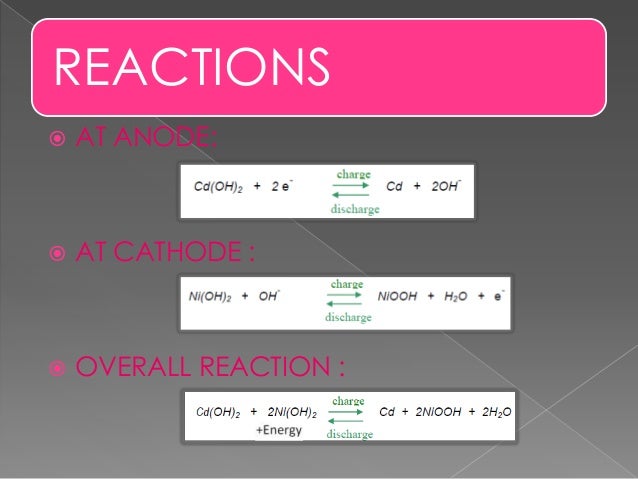The nickel cadmium battery ni cd battery or nicad battery is a type of rechargeable battery using nickel oxide hydroxide and metallic cadmium as electrodes.
Nickel cadmium battery reaction equation.
Nickel cadmium battery contributors and attributions rechargeable batteries also known as secondary cells are batteries that potentially consist of reversible cell reactions that allow them to recharge or regain their cell potential through the work done by passing currents of electricity.
The chemical conversion is reverted when a discharged battery is charged again.
The chemical reaction in the nickle cadmium battery or cell is perfectly reversible.
A nickel cadmium cell has two plates.
The active material of the positive plate anode is ni oh 4 and the negative plate cathode is of cadmium cd when fully charged.
They operate over a wide temperature range give approximately 2000 cycles and can be charged in less than 1 h.
When fully charged the positive plate is ni oh 2 and negative plate is cd oh 2 while discharging the positive plate converts into ni oh 3 and the negative plate is converted into pure cd.
First the rate of hydrogen formation on cadmium is very slow compared with that on pure zinc or pure.
Nickel cadmium batteries at the 1 2h rate yield twice the energy density of lead acid batteries i e.
In eqns 4 6 the cell reactions during charging and discharging are presented.
The abbreviation ni cd is derived from the chemical symbols of nickel.
In the case of the nickel cadmium battery the cadmium electrode has two important features.
The maximum cell voltage during charge is 1 3 v and the average cell voltage is 1 2 v.
Nickel cadmium batteries are used in various developmental electric vehicles.
The reactions at the nickel oxide electrode are.
